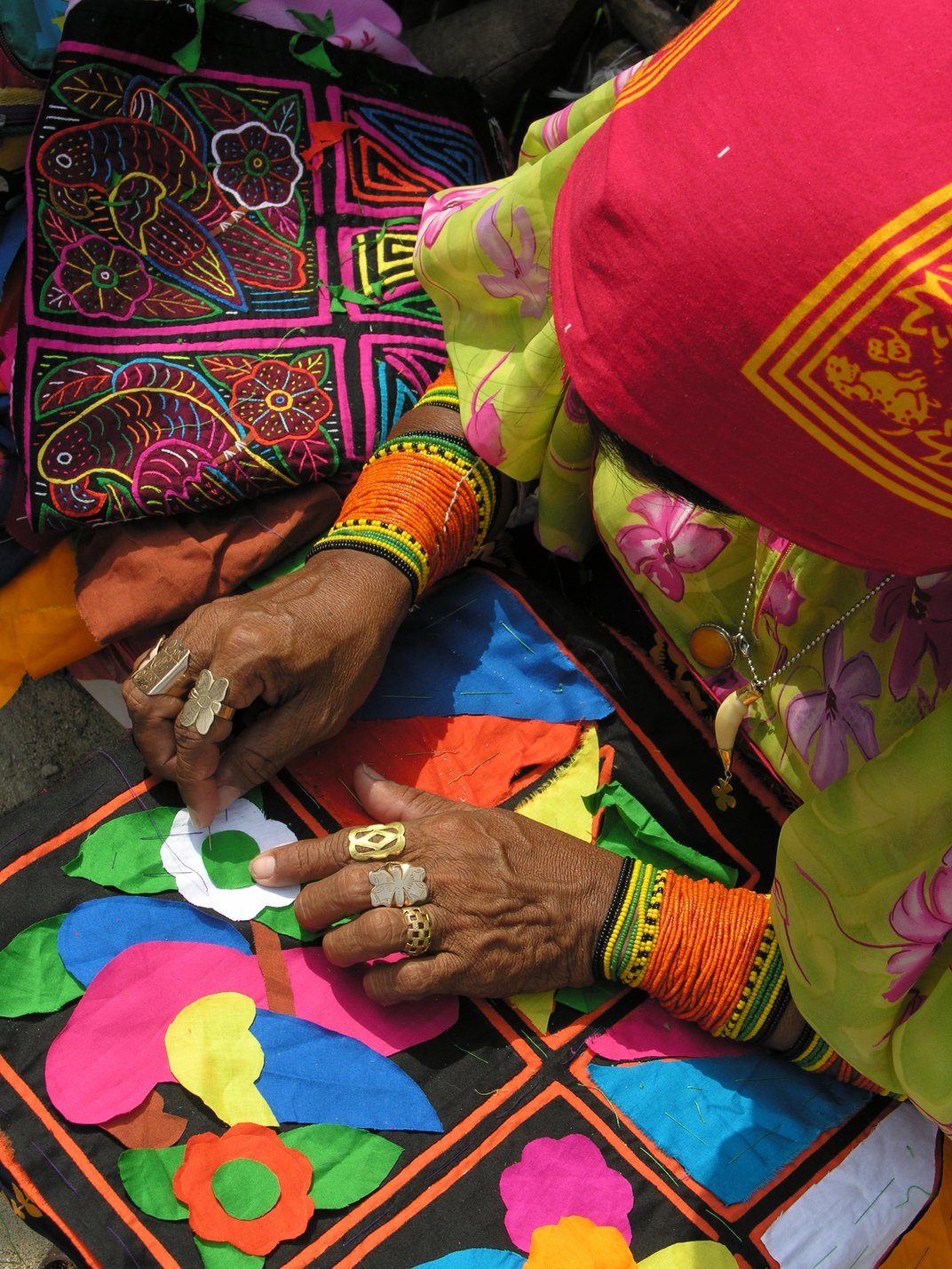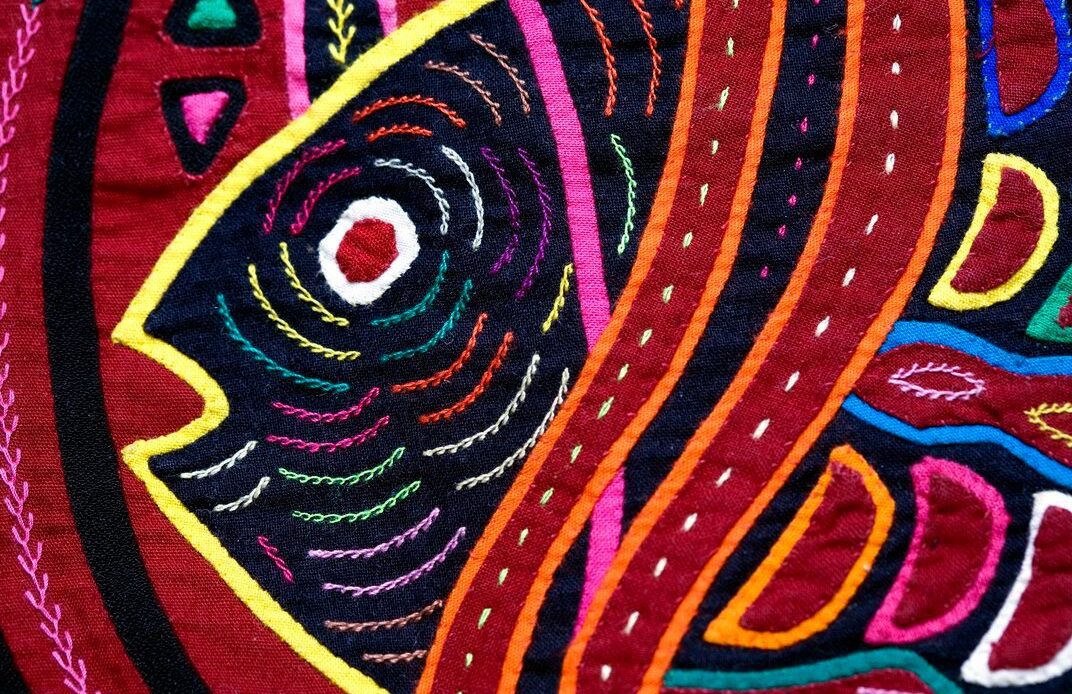Panama is a nation full of colorful imagery, from the aquamarine seas lapping at the country’s coastlines to the deep green canopy of rainforests shrouding its interior. But perhaps the most iconic example of its vibrancy is a traditional garment known as a mola.
For centuries, the Guna (previously known as Kuna), an Indigenous group residing in Panama and parts of neighboring Colombia, have been creating colorfully embroidered clothing. A mola, which translates to “shirt” in the Guna language, is a piece of traditional dress typically worn by women and known for its bright colors and intricate designs depicting flowers, birds, reptiles, animals and other emblems indicative of Mother Nature. The textile art began in the San Blas Islands, an archipelago off the northern coast of Panama that’s part of the Guna Yala Region, where many Guna people continue to live.
A mola is known for its bright colors and intricate designs depicting flowers, birds, reptiles, animals and other emblems indicative of Mother Nature.
traveler1116/Getty Images
While there’s no exact record of when the first mola was made, many historians believe that the colorful custom stemmed from a different form of art that was common within the Indigenous community: body painting.
“At one time, the Guna people used body painting to keep away evil spirits,” says Yanelis Ledezma, a tour guide at the Museo de la Mola (MUMO) in Panama City. “Ladies would draw symbols and signs on the bodies of their family members. The Guna believe that the universe is divided into multiple levels, and that there are no empty spaces, so their designs have to continue from the front to back to keep away evil spirits. Eventually, these same patterns were implemented into the molas.”
Using reverse appliqué, a single shirt can take anywhere from 60 to 80 hours of labor to sew. Ducoin David/Getty Images
Making a mola the traditional way isn’t for the faint of heart, and Ledezma estimates that a single shirt can take anywhere from 60 to 80 hours of labor to sew. To create each garment, women and girls use a
Click Here to Read the Full Original Article at Travel | smithsonianmag.com…
